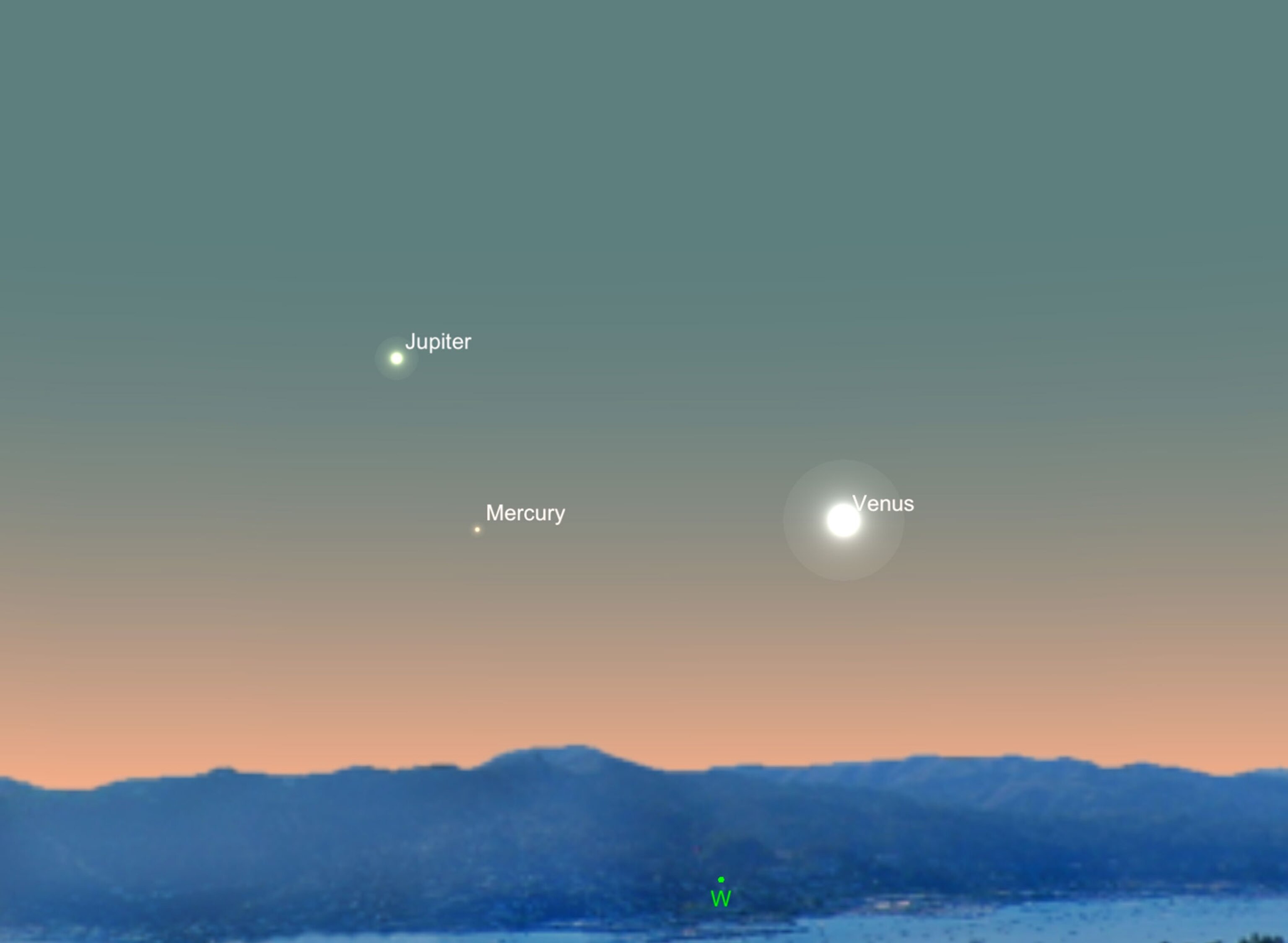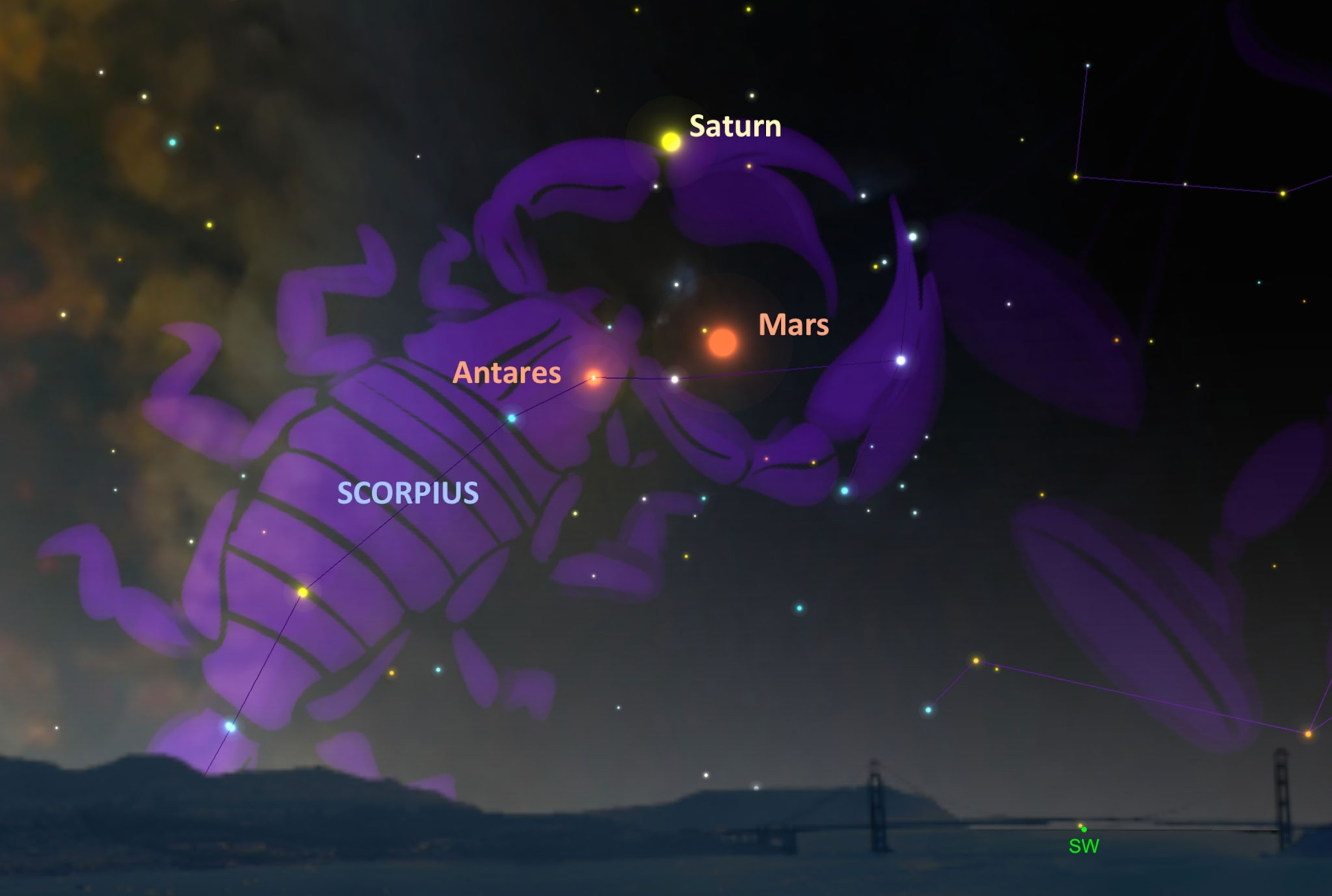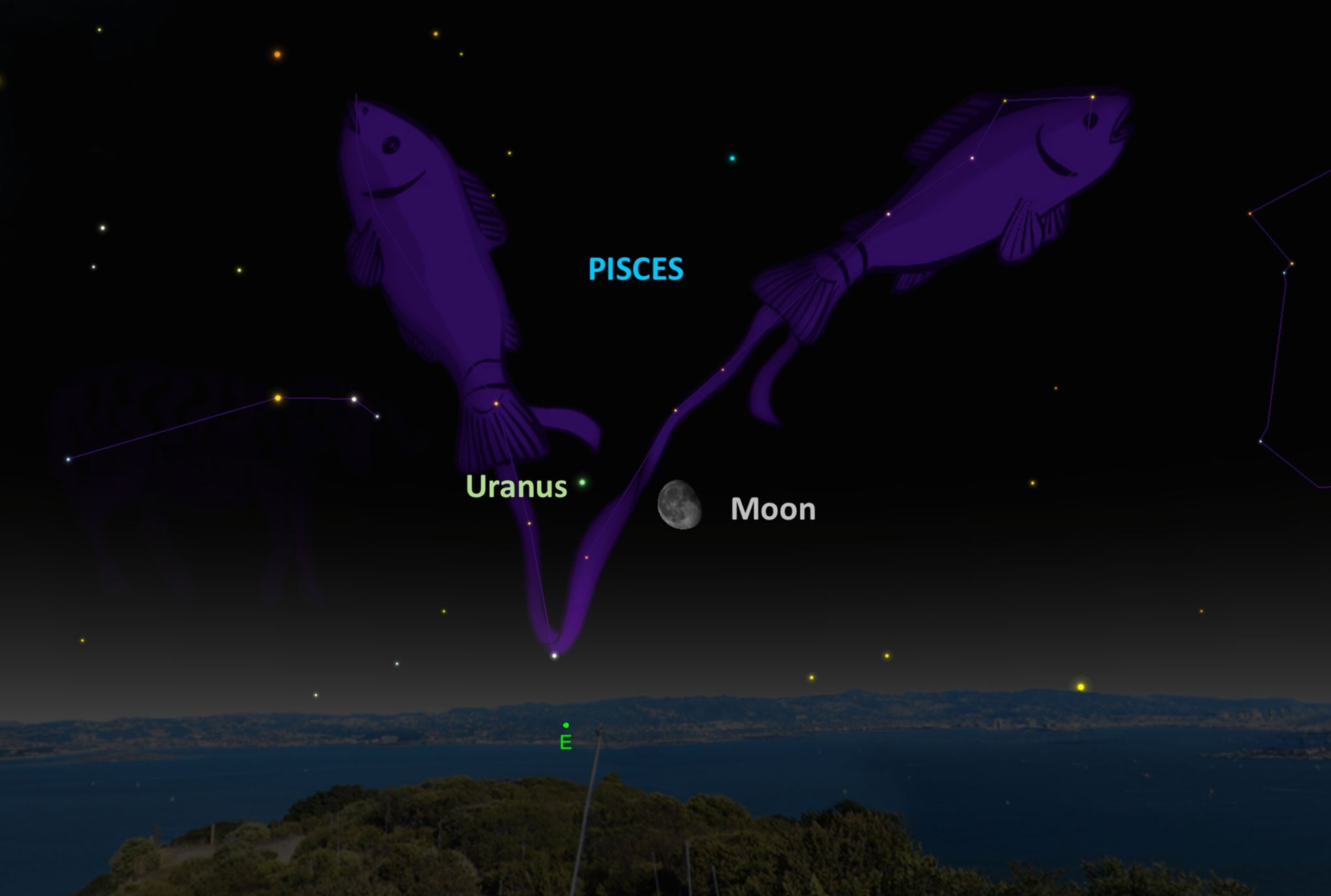
This Week’s Night Sky: See Neptune in Aquarius
Also this week, Mercury gets easier to spot and Uranus pairs up with the moon.
Mercury Rising. After sunset on August 16, look for excellent views of the planet Mercury as it reaches its farthest position from the sun as seen in Earth’s sky.
The innermost planet never wanders far from our sun, which means it is usually lost in the sun’s glare and is a consistently challenging observation. This week, however, the tiny world will reach what is known astronomically as its greatest elongation, when it will sit 27 degrees from our home star, equal to the width of three clenched fists held side by side at arm’s width.

To find Mercury, start by using binoculars to look for the faint, starlike world about a half hour after sunset. It will be only five degrees above the western horizon, equal to the width of your three middle fingers held at arm’s length. Jupiter will help you out in your planetary hunt, as the bright planet will be just above Mercury, about half a binocular field of view away. Remember that Mercury will be following the sun and will set very quickly, so timing your viewing will be critical.
Full Moon Shading. On August 17, look for the nearly full moon rising in the east just as the sun sets in the west.
The true full moon arrives officially at 5:27 a.m. ET on August 18. But watching the night before means you’ll technically be watching a partial eclipse. As the sun, Earth, and moon align on the night of August 17, a tiny 2 percent of the moon’s disk will be slipping through the northern edge of Earth’s faint outer shadow cone. This partial lunar eclipse will be too dim for backyard observers to notice, but the moon will still present an amazing sight.

Neptune Hunt. On August 18, night owls will get a chance to track down the most distant ice giant in our solar system, thanks to our moon pointing the way.
While the lunar glare may be distracting, a strong set of binoculars or backyard telescope will be able to pick out the tiny, blue-tinted disk of Neptune among the faint backdrop of stars in the constellation Aquarius, the water bearer. Look for the gaseous world less than five degrees east of the moon, fitting within a binocular field of view.

Mars and Antares. As darkness sets in on August 19, face the southwest skies for a grand triangular pattern of yellow, starlike Saturn with ruddy Mars and Antares.
Both Mars and the bright star Antares will appear only three degrees apart, and both will glow brightly with an eerie orange-red hue. But don’t be fooled by their apparent proximity. While Mars is a third the size of Earth, Antares is 700 times as wide as our sun. The two objects only seem alike because Mars is relatively close to Earth, at just 6.8 light-minutes away, while Antares sits at a stately 620 light-years distant.
Over the next week or so, watch the two superbright objects slowly converge in a spectacular pairing not to be missed.

Uranus and Moon. Late night on August 21 presents another observing challenge for people with binoculars, as the moon guides you to the green giant planet Uranus.
Glowing at magnitude 5, Uranus should be a fairly easy target to spot by sweeping your eyes to the east of the moon. Look for a faint but distinctly green disk about five degrees from the moon in the constellation Pisces, the fishes.
Clear skies!
Andrew Fazekas, the Night Sky Guy, is the author of Star Trek: The Official Guide to Our Universe. Follow him on Twitter, Facebook, and his website.
Tune in to National Geographic Facebook LIVE each Monday at 12:30 p.m to see Andrew share the week’s best skywatching sights and answer your questions about the night sky.





